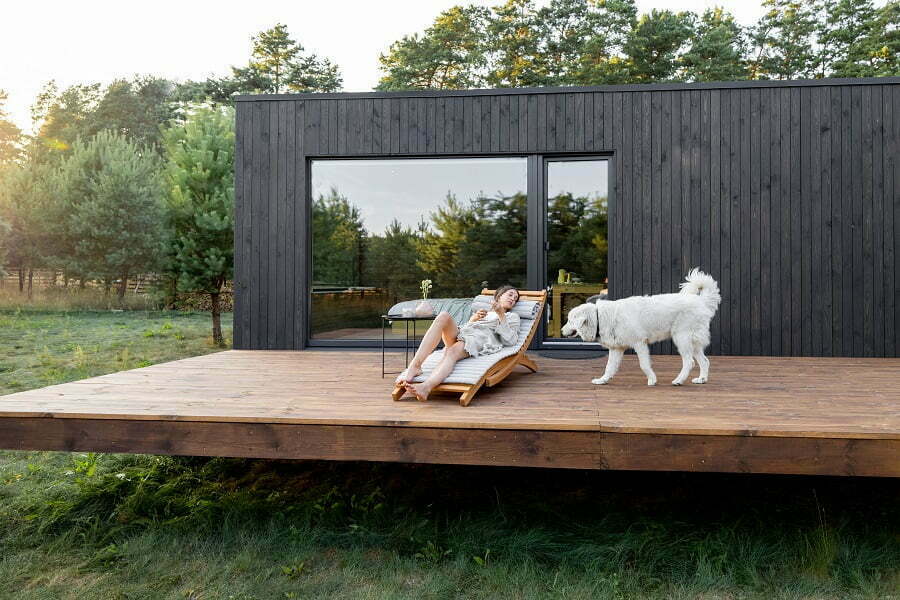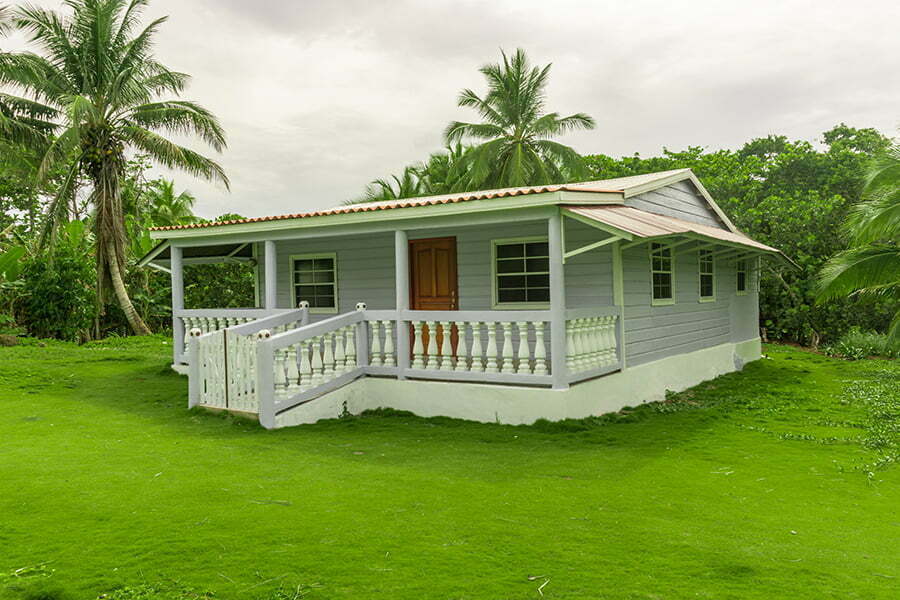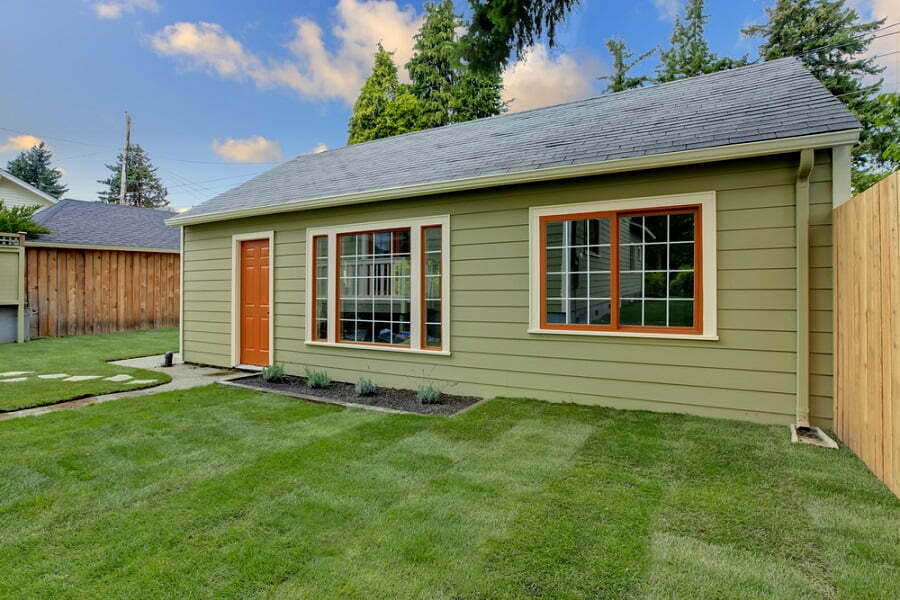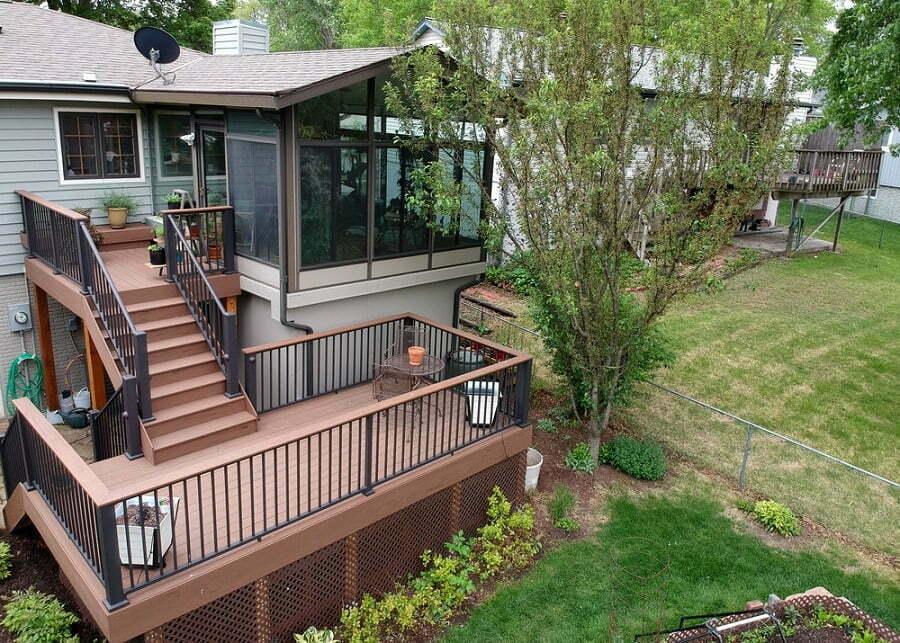Last updated on
A prefab house of any type can be made of the same materials as a stick-built house. The prefab manufacturing process is the difference. However…
Some elements are exclusive to the prefabricated building. In this article, we will cover all the ways that a typical prefab home can be made of. This is especially interesting if you’re looking to buy a prefab house yourself.
So let’s look at the parts of a prefab house and what materials are typically used to build it. While you’ll notice that many of the same materials can be used as in traditional construction, some materials and structural elements are only found in prefabs.
What Makes a Home Prefab?

Any housing structure made off-site and assembled on a wooden or concrete foundation on-site can be referred to as a prefab house. Originally, these homes were designed to be temporary and served as replacement homes for houses damaged by bombs during the war. While these homes were meant to be temporary structures, many still stand to this day.
Today, many high-quality prefab home designs are fit for royalty. These homes have also received widespread acceptance in all parts of the world. For a home to be considered prefab, the wall and roof panels must be designed and fabricated off-site for assembly on the designated parcel of land.
The sections must come with water and gas plumbing and electrical wiring. Most modern prefab houses are associated with high efficiency and superior quality.
The Structure of a Prefab Home
A prefab home has two main components – structural frames and wall panels – they make the prefab shell. Thick wooden frames are used to offer vertical structural support. Others are used as beams.
Prefab sandwich panels are perhaps the most essential components of prefab homes. These panels form both the inner and exterior walls of the housing structure. Components that make up the roofing structure are prefabricated off-site and assembled on the prefab home before installing the roofing material.
Since every house requires a foundation, a concrete foundation can be constructed before the prefab home is delivered and assembled. Wooden floor panels can also be used in prefab homes. It all depends on the preferences of the client.
Materials Used in Prefab Houses
As mentioned before, many of the same materials can be used in prefab buildings. Here are the most common materials that are used in the prefab manufacturing process.
Concrete
Concrete is one of the most common types of building materials. When making multistory prefab buildings, precast concrete wall panels can be used. These sections can be made to be stronger, water-resistant, and lighter in weight by the addition of another material known as graphene to the concrete mix. Precast floor planks can also be used to build the foundation for a prefab home.
Wood
This is the most common building material for prefab homes. If you’re wondering, what is a prefab house made of? The answer is usually wood.
From wooden columns and beams to wooden panels and frames used in the roofing structure, wood seems the most popular material for prefab homes. The material is readily available, light in weight has impressive insulating properties, and is exceptionally durable, especially if properly treated.
Wood is often used with other building materials to build high-quality, sturdy prefab homes that can last many decades without any issues. Wooden sections of a prefab home are usually mass-produced at the factory, making it possible to create identical homes. However, consumers can ask the manufacturer to customize their home to meet their specific needs.
Steel
The strength and durability of steel as a building material have been well documented since its invention. While many prefab homes use wooden beams and columns to provide structural strength, other homes use steel columns and steel beams.
Steel has an impressive strength-to-weight ratio that makes it suitable for use on the floor of prefab homes. Unfortunately, steel is known to be heavy and has poor insulating properties, which can lower the home’s energy efficiency.
Glass
After wood, concrete, and steel, glass is the most common type of building material. Glass comes in tempered glass, wire glass, heat-strengthened glass, and laminated glass, among others.
Glass has high chemical and fire resistance and impressive strength and insulation properties. Glass is also 100% recyclable and has unique aesthetic properties that make it suitable for use in prefab houses.
Recycled and Reclaimed Materials
Prefab houses are considered sustainable for a variety of reasons. For one, they make use of both reclaimed and recycled materials.
Examples of recyclable materials used in prefabricated homes include; fiberglass and cellulose insulation, ceramics, plastics, ceiling tiles, gypsum, steel, and wallboard.
When recycled or recyclable materials make prefab homes, the final product becomes sustainable. Manufacturers of prefab homes usually recycle waste, such as timber off cuttings, sawdust, and other waste materials.
Additive Manufacturing Helps to Build Prefab Homes
Additive manufacturing is commonly referred to as 3D printing of prefab homes. This revolutionary concept has received widespread acceptance in the construction industry.
Additive manufacturing makes it possible for prefab home manufacturers to print individual components of prefab homes, such as wall panels.
Building materials that can be used in additive manufacturing include; concrete, plastic polymers, and metals. When concrete and aggregate-based materials are used, layers are extruded one after another until the entire component is ready for curing.
Additive manufacturing allows for mass-production of parts, which can be done quickly and cheaply.
Energy Efficiency
The design of prefab homes takes into consideration energy efficiency. That is why materials with good insulation properties are often used. The prefabricated wall panels are usually properly sealed and insulated.
During assembly, the seams of these panels are usually adequately sealed to ensure there are no gaps through which heat may escape to the outside. Similarly, cold air cannot get into the house and lower energy efficiency.
FAQ
The answer is yes. Originally prefabricated houses contained asbestos. The roof and walls of prefabricated homes contained asbestos lining, which was the cheapest and most effective insulation material. Since asbestos is now known to cause cancer, most prefabs that have asbestos have been demolished.
Prefabs have a long history. However, in the post-war era, prefab houses were made of steel with aluminum siding. All war surpluses of steel and aluminum were used for making prefab homes. Asbestos was the primary material used for insulation.
Table of Contents

![How Much Does an ADU Cost? [Solved]](https://buildgreennh.com/wp-content/uploads/2022/08/ADU-Tax-Deductions-and-Benefits.jpg)
![How to Build an ADU? [Step-by-Step]](https://buildgreennh.com/wp-content/uploads/2022/08/Why-Are-You-Building-an-ADU.jpg)

